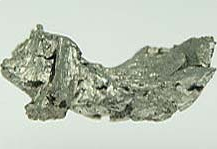Rare Metals
The metal is used in scientific and other special equipment, such as surgical tools. It is also used in making chemical crucibles. Iridium is used principally in alloys. An alloy with osmium is used to make fountain-pen nibs. Alloys with platinum are used in heavy-duty electrical contacts. An alloy of 10 parts iridium with 90 parts platinum is used in the international kilogram standard in Paris. Formerly the international meter standard was the distance between two marks on a bar made of that same alloy; it is now based on the wavelength of a line in the spectrum of an isotope. Iridium is chemically very non reactive.
Pure iridium metal is not attacked by acids or acid mixtures, not even by aqua regia, which dissolves gold. Fluorine and chlorine attack it only at a red heat. It is oxidized slowly at high temperatures. It resists attack by fused bases and by most molten metals. Iridium was discovered in 1804 by Smithson Tennant; it is so named because of its various highly colored salts.


















